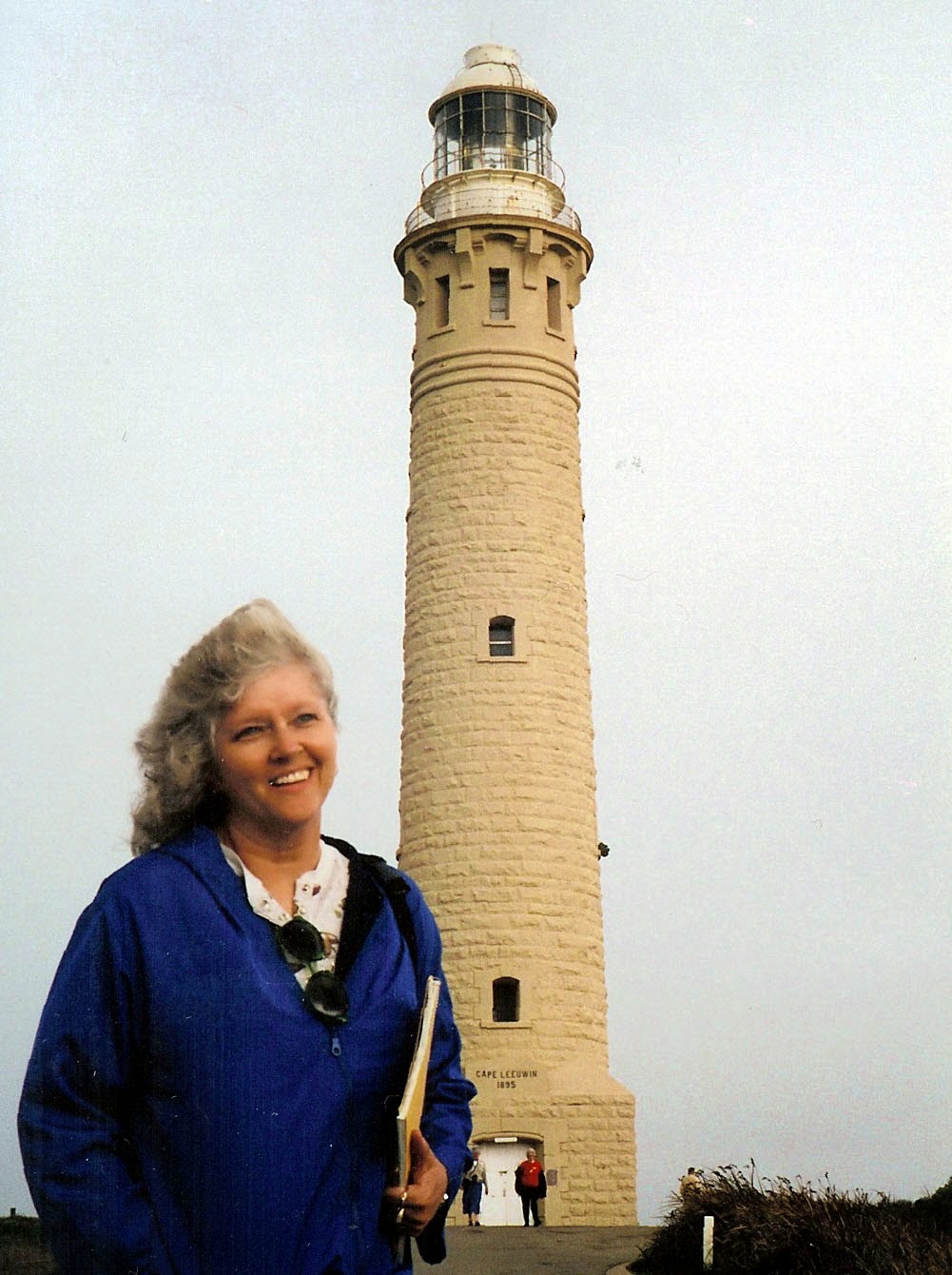Everyone knows lighthouses are photogenic. You can get all sorts of neat angles, colors, seasonal shots, and interesting elements at a lighthouse. Around 1985, I decided to capture lighthouse shadows. I have dozens of them in my collection of images. They may be fleeting and ethereal, but they're definitely part of the lighthouse milieu.
St. Augustine Lighthouse, Florida, casts its long shadow--by Ronnie Bo.
I found a slide of a lighthouse shadow this morning. It's Ponce Inlet Lighthouse in Florida, a tall one. There are many more images of lighthouse shadows in my files, I'm sure. "Don't forget to shoot the shadow!" was a common admonition from my husband years after our lighthouse fascination began. So, now I realize "Lighthouse Shadows" will be one of the categories I'll need once my slides are digitized.
Like huge sundials, lighthouses mark out the hours on the ground. Each one does its own shadow path, depending on its height and latitude. In the Northern Hemisphere, lighthouse shadows fall on the north side of the towers around noon time, because the sun rides in the south at noon on its daily travels. In the Southern Hemisphere, the reverse is true; the shadow of a lighthouse falls on the ground to south of the tower around noon because the sun lies in the northern sky. And, for lighthouses at the equator, shadows are short all year; on the equinoxes at noon, there are no shadows. We all know shadows are longer in winter, as the sun rides lower in the sky. To catch a long lighthouse shadow, go in the morning or evening in winter.
Cape Leeuwin Lighthouse in Western Australia points its morning shadow toward the Indian Ocean, and then as evening draws near, it points to the Southern Ocean. I'm especially fond of this image, having visited Cape Leeuwin Lighthouse in 2000 (shown below). Photo above by Bonny Wells.
Of course, real sundials are made with precision, aimed at giving accurate time. A sundial's gnomon--the part that casts the shadow--must be angled to match the latitude of the place where it tells time. The angle of the gnomon plus the angle of the sun's altitude at noon must equal 90 degrees. The math isn't all that complex, but I won't go into it here. (I point out the latitude requirement simply because so many of us are duped into buying garden sundials from stores and catalogues without realizing the gnomons must be set to our latitude. Most garden store sundials are set for 45 degrees latitude. Most of the United States lies below 45 degrees.) So, I suppose this means only a leaning lighthouse could really be a sundial of any use.
If not an accurate sundial, then a lighthouse is an imaginary one for sure! Its gnomon-like stance surely gives a crude sense of the time. I've always thought it would be fun to mark a lighthouse's shadow path on the ground and watch how it changes season to season. The farther it stands from the equator, the greater the change will be as the sun slides low in winter and high in summer.
Sean Rose captured the phantom shadow of Cape Hatteras Lighthouse. This tallest American lighthouse produces one very long shadow, especially on the winter solstice!
Tony Kurdzuk shot the shadow of New Jersey's Cape May Lighthouse on a summer day.
Some lighthouses have sundials on their grounds, usually just for decoration. European lighthouse builders were fond of putting sundials at lighthouses. The Stevensons, who built many lighthouses in the United Kingdom, must have felt a sundial was a stylish element and possibly a bringer of luck. They liked the tradition and added sundials to many of their light stations.
Here's a sundial at Mizen Head Lighthouse in the UK, photographed by Michael Harley.
You can see a sundial to the left of the light tower at this French lighthouse, featured on an old postcard.
Most sundials have sayings on them, about time and sunshine. What would a lighthouse's saying be?
Tempus fugit...
But not if you're a lighthouse keeper stuck on a hunk of rock at sea!
Time drags on...
I show only sunny hours,
So why am I on duty in foggy San Francisco?
Time is written in my shadow,
But only if I lean to the right latitude!
If you hanker for a lighthouse sundial of your own, try this one. You'll find it at http://gardenculture.com/store/product9.html.
And, know that the angle of this garden store variety sundial is 45 degrees and won't give much of an accurate time...unless you live at 45 degrees latitude. Perhaps this is why the U.S. Lighthouse Establishment encouraged lighthouse keepers to use pocket watches and the service-issued wall clock.










No comments:
Post a Comment
I welcome your comments, photos, stories, etc.!